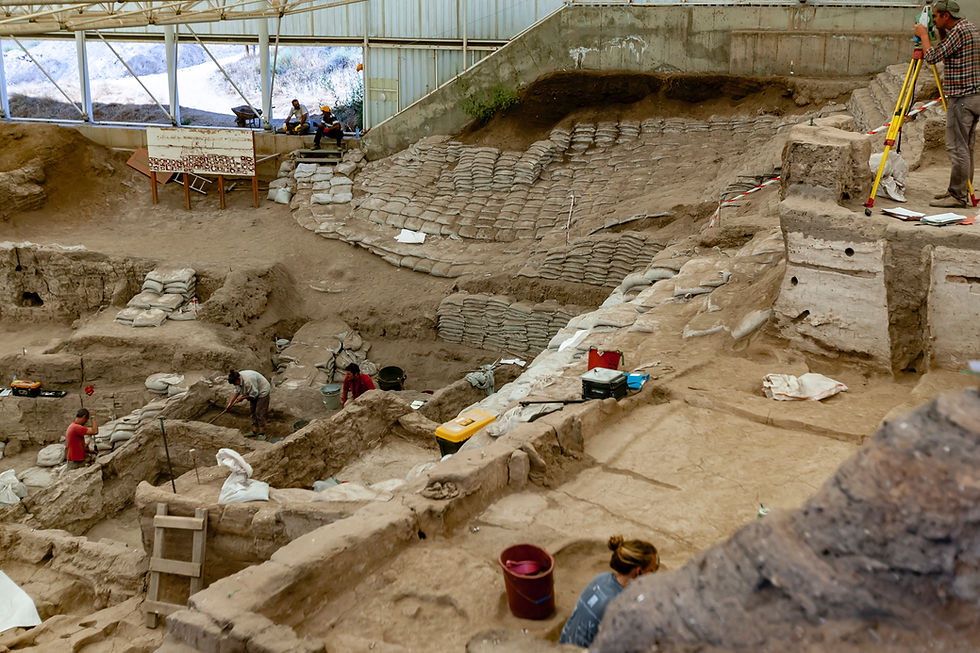Dig Into Fun!

Breaking Ground
Adventure, mystery, history...yes! Archaeology is rich with the makings for an intriguing and exciting homeschool lesson plan. There is so much material to uncover and inspiration surrounding this subject, but could I prepare a unit study that even Indiana Jones would be jealous of?
Tons To Discover
With enough ideas in my mind to fill a dig site with, I had to scale it back and start at one square hole. This was going to be such a great unit study, I knew it would be one we would have to revisit, so with keeping that in mind, I was better able to not dig too deep a hole for myself. After doing some research I narrowed my sights on the key elements, activities, and creations I wanted to incorporate.
Preparing a lesson plan about archaeology revealed hands on fun and learning that just made me want to keep on digging further!
Here's a few ideas to help you set up your own dig site.
Get the complete Archaeology Lesson Plan HERE!
Let's Dig In!
Start the exploration of archaeology where it's found- outside!
There are so many ways to get to know and understand what
archaeology is and why it is done while putting it into action.
With some planning and a few supplies, we packed our
"dig kits" and got going, off to the park to set up a dig site of our own. Once completed, I was able to work their math skills using math topics already exposing themselves
in our study: ordered pairs and charting. With the learning activity "Dig Site", I used our previously prepared dig site, along with a created paired worksheet, to practice reading ordered pairs and charting. They had the fun experience of what the process of an excavation was like, searching and collecting "artifacts", while I enjoyed knowing they were furthering their math skills!
Uncover The Fun!
With archaeology being such a hands on profession, so should the rest of the week's learning be.
To keep the archaeology fun going throughout our learning, I used the theme to spread into our core subjects' learning activities. A bit of D.I.Y. , sand, and a missing letter spelling word list, my young archaeologists were eager to reveal letter tiles below the sand's surface in the spelling activity "Brush It Off".
No need to stop at spelling activities though,
have your learners experience different types and categories of artifacts by playing "Adding Artifacts".
In this math activity, young archaeologists solve for missing addends to check the coordinating bags and obtain a key letter to answer the riddle on the paired worksheet. There are so many levels of learning and stretching their thinking in this activity, all while having fun doing it.
With all the exploration,
be sure you take a well deserved snack break, fit to please an archaeologist!
With a well received snack I named as "Discover Your Snack!", my kids were uncovering and collecting buried snacks as their artifacts. A fun an easy creation to prepare that brought smiles and yum to the day. For the complete how-to for this, visit here.
Dig Deeper!
Get further into the study by visiting an archaeological center or museum. Seeing true artifacts and experiencing the history behind them was a treasure all its own! Being in and among the information we had explored earlier in the lesson, supplied my kids with the immersive learning I strive for in our homeschool studies. Museums aren't the only tool we as homeschoolers have though! Being that archaeology so heavily involves the Earth and its layers, access to it is right within reach. Take a field trip to the mountains or ocean cliffs in order to examine stratigraphy up close- who knows, you may even discover an artifact yourselves!
The highlights from our field trip were seeing and learning about donut stones and their possible uses, along with testing out the type of microscope archaeologists use in order to examine and search for artifacts in the ground.







Comments